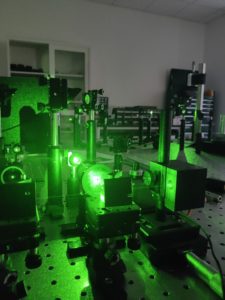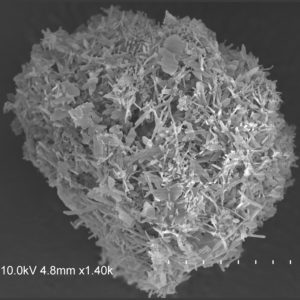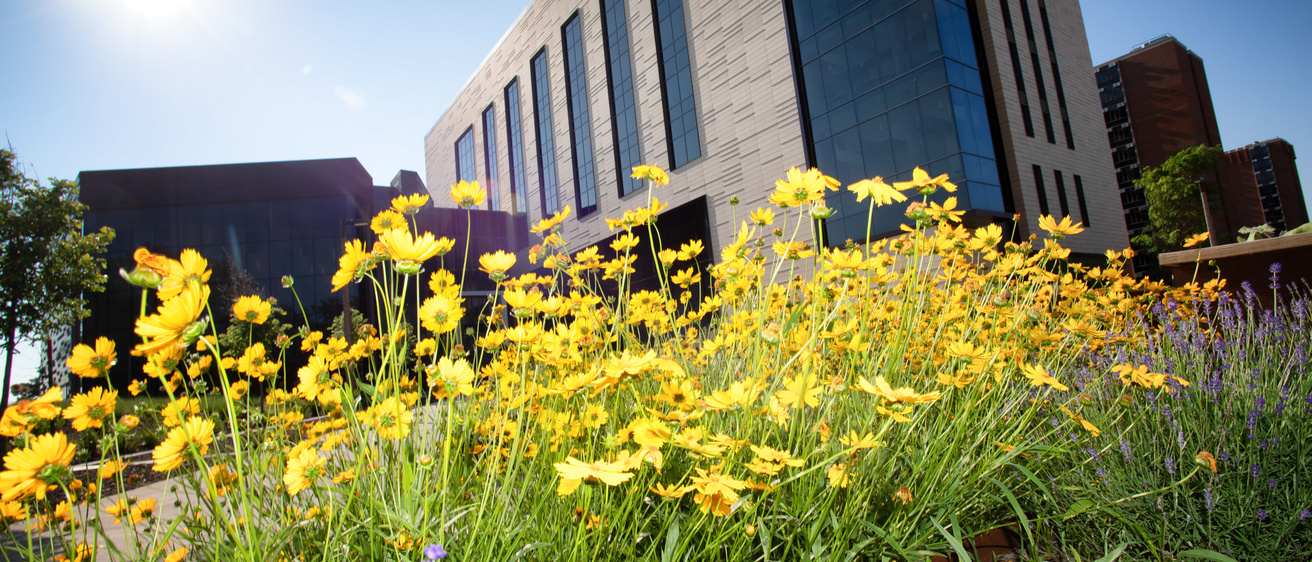Sanika Jadhav — a PhD student and graduate research assistant in pharmaceutics — recently had two images of her research instruments featured in the Capture Your Research People’s Choice 2024 competition, hosted by University of Iowa Libraries.

The first image, pictured right, showcases the Powder Brillouin Light Scattering Spectrometer (p-BLS) located in the lab of Lewis Stevens, associate professor and pharmaceutics program director at the College of Pharmacy. This instrument is one of very few in the United States.
Jadhav’s image captures the p-BLS performing Brillouin Light Scattering (BLS) spectroscopy analysis on pharmaceutical materials.
Stevens and his lab have built and extensively used the p-BLS for years, pioneering research on the mechanical properties of powders through its unique capabilities.
This technique has immense potential for analyzing the mechanical properties of various pharmaceutical materials, including drugs, tissues, cells, and even rigid substances like animal bones. It is a non-destructive, quick, and convenient method that requires only milligrams of a sample for analysis.
The BLS instrument uses a laser as a light source and multiple mirrors to reflect and adjust the light’s intensity before it reaches the sample. When the light hits the sample, it scatters. A detector then captures the scattered light and interprets the change in energy to determine the material’s microscopic and macroscopic properties.

Jadhav’s second image, left, was taken using a scanning electron microscope (SEM) in the University of Iowa Materials Analysis, Testing, and Fabrication (MATFab) facility. It depicts a microscopic view of a novel pharmaceutical material designed to create stronger, more robust tablets.
“Without this material, tablets formed were fragile and broke easily,” she explained. “However, with this material, we can make strong tablets. Thus, we can improve their manufacturability.”
Jadhav’s broader research focuses on pharmaceutical material design and characterization to develop more effective medicines for poorly performing pharmaceutical compounds.

“Characterization of various types of pharmaceutical powders using p-BLS and SEM has led to a substantial contribution in understanding various aspects of pharmaceutical materials, mainly surface and mechanical properties,” she shared. “Considering these properties, we could investigate and analyze the improved performance of our novel pharmaceutical materials.”
Stevens’ lab theme is aptly titled, “Better Medicines by Material Design.” By reimagining what materials can do—how they interact with cells, how they break down in the body, how they can be tailored to release a drug at just the right time— his team is pushing the boundaries of traditional pharmaceutical science. Their breakthroughs are being translated into real-world applications that are already improving patient outcomes.
